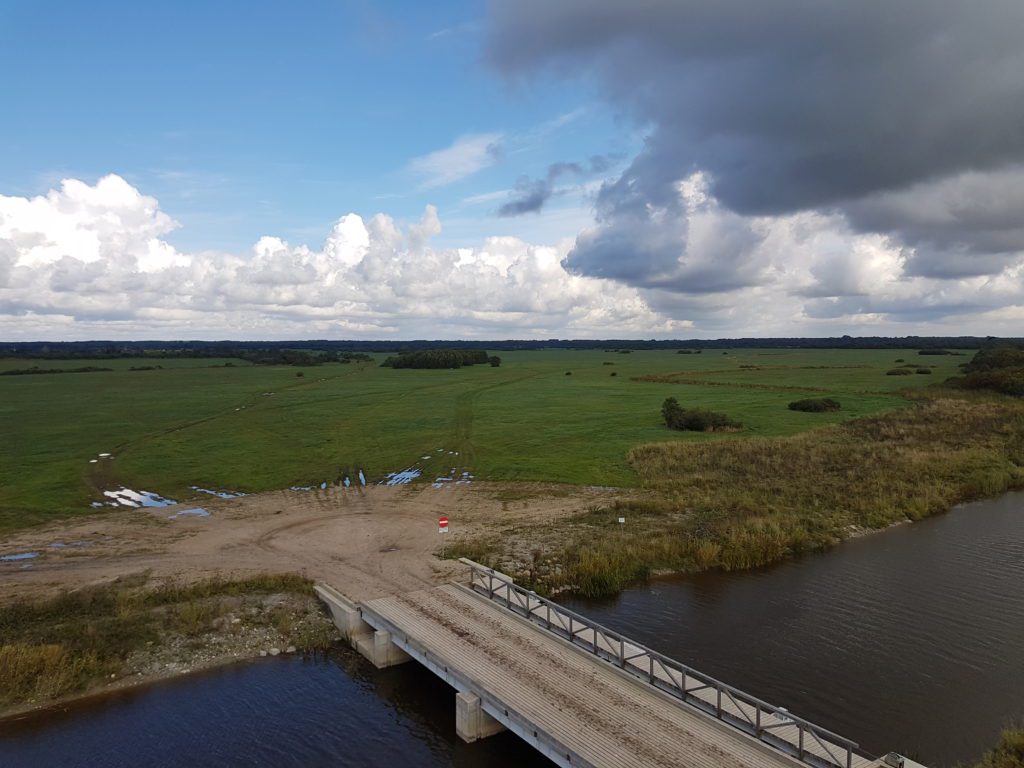Nature conservation management of wet grasslands, by Baiba Galniece
Matsalu National Park, Estonia - photo by Baiba Galniece, winner of the Alfred Toepfer Natural Heritage Scholarship in 2016
Nature conservation management of wet grasslands
Issued by Baiba Galniece
Every year, the Alfred Toepfer Natural Heritage Scholarship (ATS) supports the work of young conservationist in protected areas across Europe. Baiba was one of the winners of the Scholarship in 2016. She works for the Environmental Conservation Agency in Latvia and with the Scholarship visited 4 protected Areas – 2 in Hungary and other 2 in Estonia.
Applications for the 2018 Natural Heritage Scholarship edition are now open! Get to know how to apply.
Floodplain grasslands play an important role in the context of climate change mitigation and adaption and they serve different ecosystem services such as flood protection, water purification, nutrient and water retention and, of course, food production.
However, these habitats are strongly threatened by human activities. This is very important for Eastern and Central Europe where many examples from the last decennium have shown a shift in flooding periods from winter to summer which generates more severe consequences. Therefore, nature-based approaches need to be taken into account where restoration of floodplain functions, safety and habitat creation are combined together.

photo by Baiba Galniece
The above mentioned issue – a shift in flooding periods from winter to summer floods due to climate change – seems to appear more frequently among Latvia’s rivers and therefore there is an urgent need for projects with nature-based approaches for climate change mitigation and adaption, and projects with sustainable long-term effect on nature conservation.
The aim of the study was to visit several protected areas in Estonia and Hungary where large-scale projects on floodplain grassland restoration have been realised, to see how these areas are managed after the end of the project. I collected and compared examples how project sites on grasslands are managed and monitored, and how these data are used in decision-making for nature conservation in both countries.
In Hungary, I visited the Őrség National Park and Balaton Uplands National Park, whilst in Estonia, I visited Matsalu National Park and Sooma National Park.
To be able to reach the aim and objective of this study, several activities were implemented:
- visits of the protected areas’ headquarters;
- field trips on grasslands areas;
- discussions with experts about protected area administration, management plans, operational plans, grassland management practice and monitoring, available agri-environmental programme, collaboration with landowners, implemented projects;
- presentations about nature protection and conservation in Latvia.
Outcomes of the study
At the end of the study tours, I have collected different examples about wet grassland management practices – the main techniques and methods that are used in grassland management according to different biodiversity targets (plant, bird, butterfly species etc.). Also information on monitoring system and evaluation mechanism of the effectiveness of grassland management practice. Moreover, the linkage of grassland management and agri-environmental programmes was explored.
main findings in Hungary…
- 1) Mowing time and frequency has changed (mowing once and mostly in May)
- 2) Low willingness to participate in the agri-environmental subsidy programme
- 3) Cannot influence grassland management on private land
- 4) Due to lack of management, abandoned grasslands are infected by alien species
- 5) Every grassland has a yearly management plan
- 6) In Balaton, a large scale wetland restoration work runned for over 30 years, to combine flood prevention and nature conservation and water buffalos are used as grazers
main findings in Estonia…
- EU funds enabledNature conservation management of grasslands to be initiated
- Land managers are interested to join agri-environmental programme, which definitely has helped to maintain biodiversity in their grasslands
- Good cooperation with Estonia’s State Forests
- Problem: a solution is needed to start using collected hay in reels, on the margins of fields

During the study, I broadened not only my practical and professional experience, but it also benefited to my personal development.
